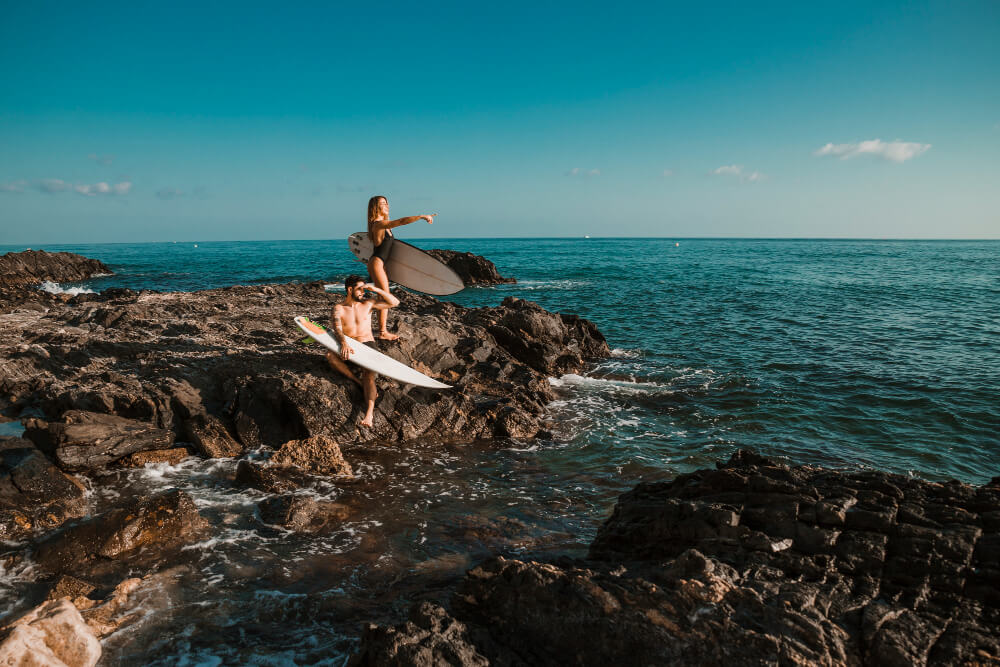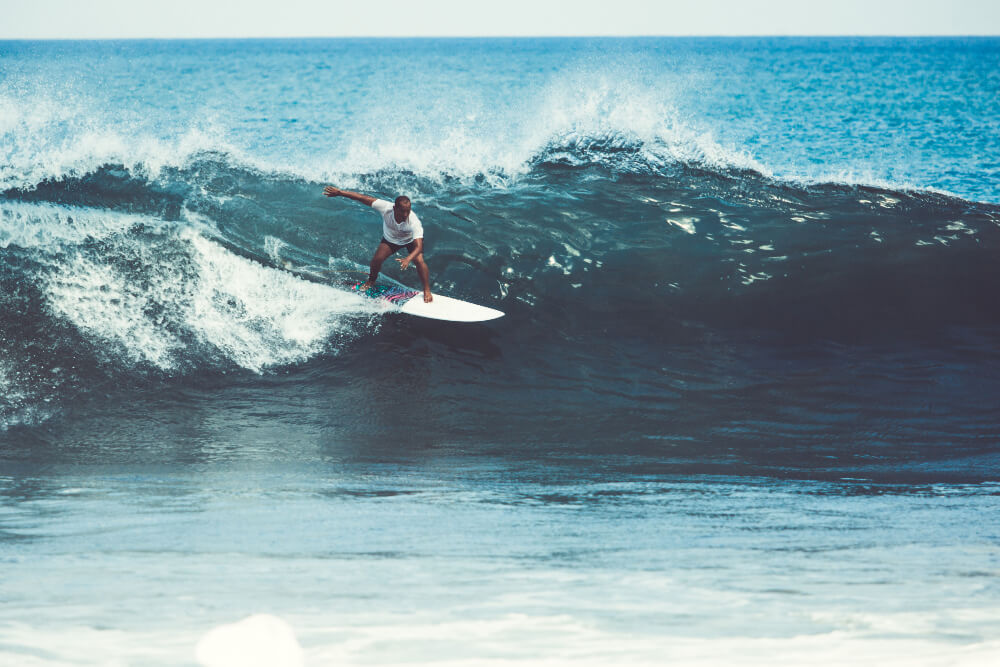Whale watching in Australia is a popular activity that allows visitors to witness these magnificent creatures in their natural habitat.
Australia is home to some of the best spots for whale watching in the world, with its diverse coastline offering a variety of opportunities to see these marine mammals up close.

The country’s warm waters and abundance of food sources attract humpback, orca, and southern right whales during their annual migration, providing an unforgettable experience for wildlife enthusiasts.
One of the most renowned spots for whale watching in Australia is Hervey Bay in Queensland, where visitors have the chance to see humpback whales up close as they rest and play in the calm waters of the bay.
Other Places to Get the View
Another popular location is Sydney, where whales can often be spotted breaching and playing in the waters of the Pacific Ocean.
In Western Australia, the town of Albany offers unique opportunities to see southern right whales nursing their calves in the sheltered waters of King George Sound.
As we explore the best spots for whale watching in Australia, we will delve into the unique features of each location and provide key takeaways for planning your next whale watching adventure.
What you should know
- Australia offers some of the best whale watching spots in the world, with various locations along the east and west coast providing opportunities to witness these magnificent creatures up close.
- The Great Barrier Reef in Queensland is a popular destination for whale watching, particularly during the winter months when humpback whales migrate through the area.
- The south coast of Western Australia is another prime location for whale watching, with the town of Albany being a hotspot for southern right whales and humpback whales during their annual migration.
- Kangaroo Island in South Australia is known for its diverse marine life, including sperm whales, orcas, and blue whales, making it an excellent spot for whale watching enthusiasts looking to see a variety of species.
- It is important to consider booking a tour with a reputable whale watching operator to ensure a safe and responsible viewing experience, while also learning more about these incredible animals and their conservation needs.
Where are the best spots for whale watching in Australia?
The best spots for whale watching in Australia are along the east coast, particularly in Queensland, New South Wales, and Victoria. Some of the top locations include Hervey Bay, Byron Bay, Sydney, and Phillip Island.
Queensland
Queensland is known for being one of the best places in Australia to see whales. Hervey Bay, in particular, is a hotspot for humpback whales during their annual migration.
The calm waters of Hervey Bay provide the perfect environment for whale watching tours, where visitors can see these majestic creatures up close.
New South Wales
New South Wales also offers fantastic whale watching opportunities, with Byron Bay being a popular destination.
From June to November, humpback whales can be spotted as they make their way along the coast.
Visitors can choose from a variety of whale watching tours or simply head to the Cape Byron Lighthouse for a chance to see these incredible animals from the shore.
Victoria
In Victoria, Phillip Island is a great spot for whale watching.
Southern right whales can often be seen from the cliffs of Phillip Island, especially during the winter months.
Visitors can also take a cruise from nearby towns like Warrnambool to get a closer look at these magnificent creatures.
Tips for Whale Watching
When embarking on a whale watching tour, it’s important to choose a reputable company that follows responsible whale watching guidelines.
Remember to bring binoculars, sunscreen, and warm clothing, as weather conditions can change quickly out at sea.
Be respectful of the whales’ space and avoid approaching them too closely.
Types of Whales to Look Out For
While humpback whales are the most commonly sighted species along the east coast of Australia, visitors may also have the chance to see southern right whales, orcas, and even blue whales.
Each species has its own unique behaviours and characteristics, making every whale watching experience truly special.
Alternatives to Whale Watching Tours
For those who prefer to stay on land, many coastal towns in Australia offer excellent vantage points for whale watching from shore.
Head to a lighthouse, lookout point, or even a beach with a clear view of the ocean to increase your chances of spotting these magnificent creatures.
Remember to bring a pair of binoculars for a closer look.
Can I see whales all year round in Australia?
Whale watching season in Australia typically runs from May to November, with the peak months being June and July.
During this time, humpback whales migrate along the east and west coasts of Australia, providing ample opportunities for whale watching.
While it is possible to spot whales outside of these months, your chances are significantly higher during the peak season.
What are some of the best spots for whale watching in Australia?
Australia is home to several prime whale watching locations, including Hervey Bay in Queensland, Sydney in New South Wales, and Albany in Western Australia.
These spots are known for their high concentration of whales during the migration season, offering visitors the chance to see these majestic creatures up close.
Additionally, the Great Barrier Reef and the Great Australian Bight are also popular destinations for whale watching in Australia.
Are there any specific tours or cruises available for whale watching in Australia?
Yes, there are numerous tour operators and cruise companies that offer whale watching experiences in Australia.
These tours often provide knowledgeable guides who can offer insights into whale behaviour and migration patterns, as well as the opportunity to see whales in their natural habitat. Some tours even offer the chance to swim with whales, providing a truly unforgettable experience for visitors.
What is the best time of day to go whale watching in Australia?
The best time of day to go whale watching in Australia is typically early in the morning or late in the afternoon.
During these times, the water is calmer and the lighting is better for spotting whales. Additionally, whales are often more active during these hours, increasing your chances of seeing them breach or play in the water.
Are there any regulations in place to protect whales during the migration season?
Australia has strict regulations in place to protect whales during the migration season.
These regulations include maintaining a safe distance from whales, limiting the number of boats in whale watching areas, and prohibiting activities that may disturb or harm the whales.
It is important for visitors to follow these regulations to ensure the safety and well-being of the whales.
What should I bring with me for a whale watching excursion in Australia?
When going on a whale watching excursion in Australia, it is recommended to bring sunscreen, a hat, sunglasses, and a camera to capture the experience.
Additionally, it is a good idea to bring binoculars to get a closer look at the whales from a distance.
Some tour operators may provide snacks and drinks, but it is always a good idea to bring your own water and snacks just in case.
Are there any specific behaviours or signs to look out for when whale watching in Australia?
When whale watching in Australia, keep an eye out for signs of whale activity such as breaching, tail slapping, and spouting.
These behaviours indicate that the whales are active and may be more visible from the surface.
Additionally, look for groups of birds hovering over the water, as this may indicate that whales are feeding in the area. Be patient and observant, as whales can be unpredictable and may surface at any moment.
What is the best way to get to the prime whale watching locations in Australia?
The best way to get to the prime whale watching locations in Australia is by car or by booking a tour with a reputable operator.
Many of the popular whale watching spots are easily accessible by road, making it convenient for visitors to drive themselves.
Alternatively, booking a tour with a knowledgeable guide can provide a more immersive and educational experience, as well as the opportunity to see whales from a different perspective.

Are there any accommodations near the best spots for whale watching in Australia?
Yes, there are plenty of accommodations near the best spots for whale watching in Australia. From luxury resorts to budget-friendly hotels, there are options to suit every traveller’s needs and preferences.
Some accommodations even offer whale watching packages, allowing guests to combine their stay with a whale watching excursion for a truly memorable experience.
What other wildlife can I expect to see while whale watching in Australia?
While whale watching in Australia, you may also have the opportunity to see other marine wildlife such as dolphins, seals, and seabirds.
These animals often share the same habitats as whales and can be spotted during a whale watching excursion.
Keep an eye out for playful dolphins riding the waves or seals basking in the sun, adding to the overall experience of your whale watching adventure.
Conclusion
Whale watching in Australia offers an incredible opportunity to witness some of the most majestic creatures on the planet in their natural habitat.
From the calm waters of Hervey Bay in Queensland to the stunning coastline of New South Wales and the rugged beauty of Western Australia, there are numerous prime locations along Australia’s coastlines to catch a glimpse of these magnificent animals.
During the whale watching season, which typically runs from May to November, visitors have the chance to see humpback whales, southern right whales, orcas, and even blue whales as they migrate along the east and west coasts.
Whether you choose to embark on a guided tour with a reputable operator or prefer to watch from the shore, there are plenty of opportunities to experience the wonder of whale watching in Australia.
It’s important to remember to choose a responsible whale watching operator, respect the whales’ space, and follow regulations to ensure the safety and well-being of these incredible creatures.
Additionally, be prepared with appropriate clothing, binoculars, and a camera to make the most of your whale watching experience.
Beyond the thrill of spotting whales, Australia’s diverse marine ecosystems offer the chance to encounter a variety of other wildlife, from dolphins and seals to seabirds, adding to the richness of the experience.
FAQs
What are the best times of year to go whale watching in Australia?
The long whale watching season in Australia runs from May to November, with peak times varying by region.
In southern Australia, the best time to see southern right whales is between June and October. On the east coast, humpback whales can be spotted from May through July and September through November.
Where are the top whale watching spots on the east coast of Australia?
The east coast, particularly in New South Wales and Queensland, offers excellent opportunities to see whales.
Popular spots include Sydney, where humpback whales can be seen close to shore, and the Great Barrier Reef region, which attracts humpback and dwarf minke whales between May and September.
What types of whales can be seen in Australia?
Australia’s waters are home to a diverse array of whale species.
Common sightings include humpback, southern right, minke, and even the rare blue whale.
The warm waters provide a safe habitat for whales to mate, give birth, and nurse their calves.
How can I go whale watching in Australia?
There are many whale watching tour operators along the Australian coastline that offer boat tours, as well as opportunities for swimming, snorkelling, and even helicopter tours to spot whales.
What is the best time of day for whale watching in Australia?
While whales can be spotted throughout the day, the morning and afternoon tend to be the best times, as the whales are more active during these periods.
Many tour operators time their excursions accordingly.